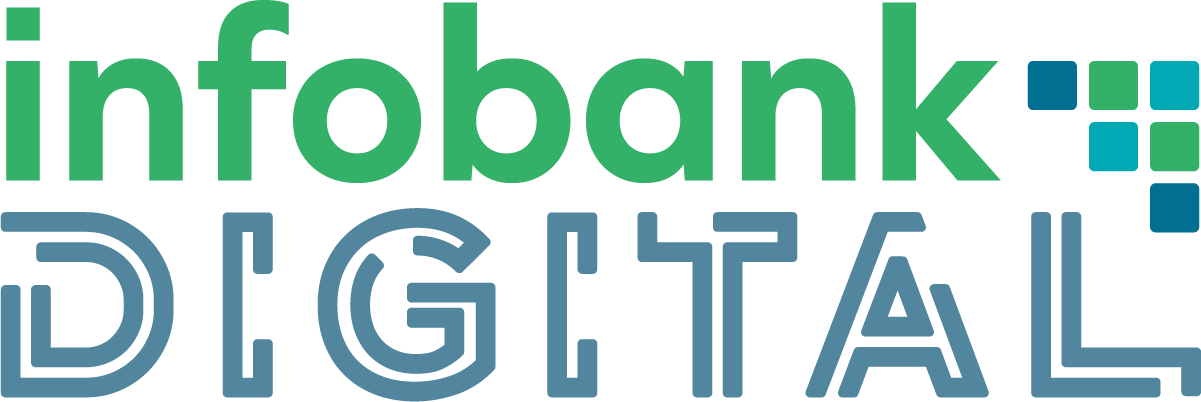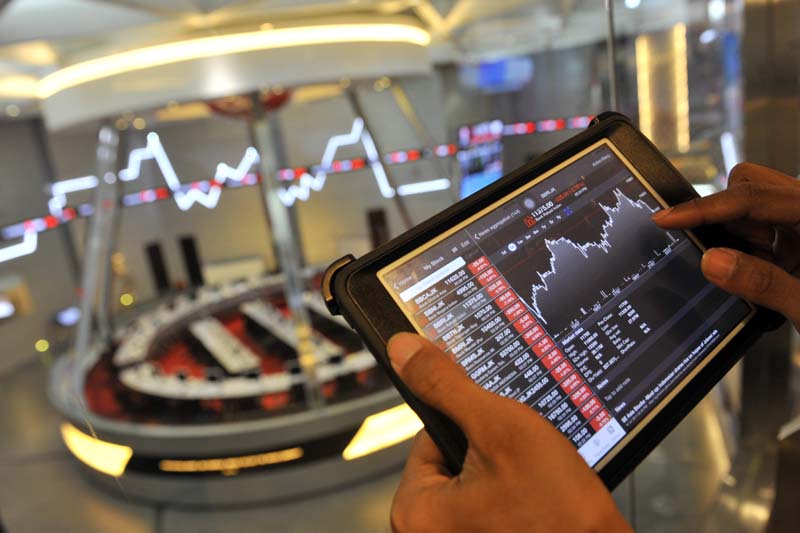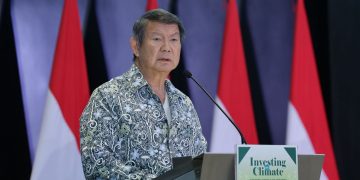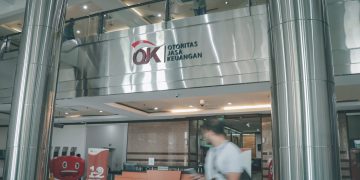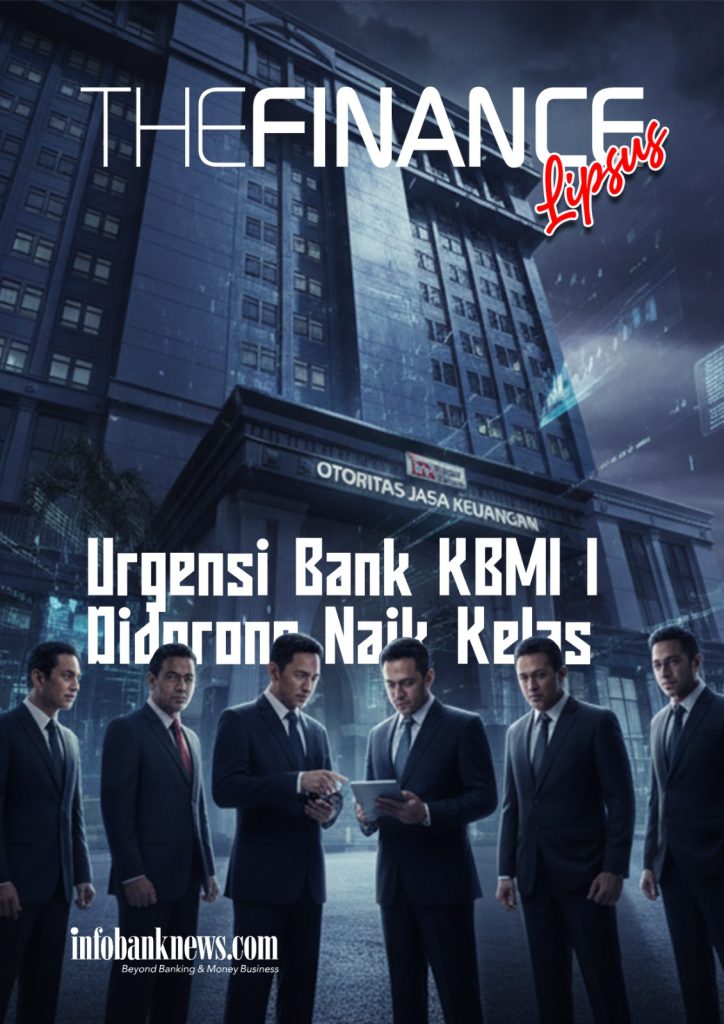Last year, the banking credits decrease 2.41%. The number is targeted to increase by 7% to 9% in 2021. Can monetary fiscal stimulus sales strengthen credit demand and pull businesses out of the red zone due to the COVID-19 pancemic? Which banks are ready to compete after the pandemic is over?
by Karnoto Mohamad
THE principle of prudence is still closely held by bankers. Although various fiscal and monetary stimuli have been put on sale to encourage banks to be more active in extending credit, they are still closely watching the situation. Jahja Setiaatmadja, Chief Executive Officer (CEO) of Bank Central Asia (BCA), has an analogy of bankers and football players. He said that a banker is like a football player who is currently playing on a muddy and slippery field. “If the soccer field is dry, a player can run fast to score a goal. But if a player has to play in the field after it rained—it’s muddy and slippery, then the player has to be careful, otherwise the player may be slipping and breaking bones, and the result is that when the field is dry, he/she can’t run and score goals,” he said via an instant message to Infobank last month.
Since the Financial Services Authority (OJK) has announced that in 2020 banking credit would have been fallen by 2.41%, many people consider banks to be too cautious and afraid of their own shadows. However, prudence itself has become a bank principle and in the field of credit, they are like fish that need not be taught to swim. Bankers generally wait for vaccinations to be carried out evenly and achieve herd immunity so that the community feels safe for mobility. If demand strengthens, credit disbursement will definitely skyrocket again.
During the COVID-19 pandemic that has occurred since March 2020, the banking industry is still well maintained, especially in terms of capital and liquidity. But what is of concern is the quality of the credit. According to the Infobank Research Bureau (BirI), 19 banks have been recorded of having non-performing loans (NPL) above 5%. And although the NPL industry was maintained at the level of 3.14% due to the relaxation of the credit restructuring policy, the portion of low-quality credit has skyrocketed. Commercial banks’ loan at risk (LAR), which at the end of 2019 was 7.52%, soaring to 22.16% as of September 2020. Banks in the group of BUKU 4 posted the highest LAR of 25.81%, while foreign banks only 6.13%. (See: Development of Loan At Risk in Banking).
The current LAR position is estimated to be even higher in the range of 25-28% and banks will certainly pay more attention to the condition of their productive assets. Two methods, special handling of low-quality credits or increasing new credit disbursements to reduce the LAR ratio. “Even though banks want to increase their loan portfolios so that the ratio will improve, if the need for credit is still weak, it cannot be forced,” said a senior banker who serves as a bank commissioner of BUKU 4 bank to Infobank last month.
Although the bankers are cautious, they believe they can enter the recovery phase this year. Bank Rakyat Indonesia (BRI), as the largest bank in Indonesia, is optimistic that it is targeting credit growth of 6 to 7 percent in 2021. Sunarso, the President Director of BRI, believes that various factors supporting credit growth are already available and are driving economic growth. “Economic growth can be supported by credit growth. Credit growth requires factors such as availability of liquidity, loosening regulations, and strengthening demand due to consumption and purchasing power, “he told Infobank last month.
Banking is targeting credit growth of 7.13% as per the bank business plan (RBB) 2021 submitted to OJK. In fact, Bank Indonesia (BI) has other calculations by projecting higher credit growth of up to 7% -9%. “The monetary and fiscal stimulus plus the improving condition of large corporations will increase demand for credit,” said Perry Warjiyo, the Governor of BI, during the Executive Lecture event held by Infobank in January 2021.
BI states that credit growth in January was still contracted by 2.1% (yoy), but it was not as deep as the contraction in December, which fell by 2.7% (yoy). To stimulate credit demand by the public, BI is ready to sell out a new stimulus in the form of a 0% down payment (DP) for homes and motor vehicles and lower the benchmark interest rate or BI 7-Day Reverse Repo Rate 25 bps to 3.50%, the lowest in history.
The Government has also done some steps to encourage fiscal policy. After the 2020 economic growth contracted by 2.07%, the government is targeting GDP in 2021 to grow by 5.5% by continuing the fiscal stimulus for national economic recovery (PEN) and handling the health crisis, especially the vaccination program. Even though last year’s tax growth fell by 13.3%, the Government is ready to add a tax-free stimulus for cars of 1,500 cc and below which can make the automotive industry smile with relief. Understandably, the automotive industry has been hit hard by the impact of the COVID-19 pandemic because sales of four-wheeled vehicles throughout 2020 fell 94% to only 532 thousand units.
Another sector that hopes for a stimulus is the property industry which is happy with the relaxation of the loan to value (LTV) policy for home ownership loans (KPR) to 100% or 0% DP. Real Estate Indonesia (REI) stated that the demand for housing in the lower middle class is still very high and during the pandemic it is necessary to propose a number of relaxation in terms of taxation and fiscal stimulus. “We also encourage banks to open credit access to all segments. During this pandemic, banks are very selective in giving credit only to people with fixed income. The non-fixed income segment should be given an opportunity,” said Royzani Syachril, one of the committee at the REI 2021 Mortgage Forum event held in February 2021.
Various monetary and fiscal stimuli as well as an extension of the relaxation of the credit restructuring policy until March 2022 are expected to stimulate credit growth in 2021. Darmawan Junaidi, the President Director of Bank Mandiri, also agrees. According to him, the Government stimulus could encourage business recovery and revival, especially in certain sectors. It’s just that so far there has not been a significant demand from the corporate segment. “Currently, there is no large demand because there are more micro, small and medium enterprises (MSMEs). For large corporations, demand for credit is still slow but has started to move up compared to last year, “he told Infobank last month.
The survey on demand and supply of bank financing in January 2021 conducted by BI shows indications of increasing corporate financing in the next three months. However, the manufacturing sector, which is the largest credit market, still relies on both its own funds and from its parent company. Meanwhile, additional household financing in three to six months is still limited. Although the supply of bank credit has increased in the first quarter of 2021, the realization of its growth is largely determined by credit demand.
The extent to which the effectiveness and stimulus carried out by the Government and the Regulator in strengthening credit demand is questionable. “What are wrong with those banks? The Government has given the stimulus, BI has given liquidity and relaxation, and OJK has extended relaxation. Or, maybe, the Government is too optimistic to target growth the growth by 5%, because the variables are still minimal, ”said Fathan Subchi, Deputy Chairman of Commission XI DPR in a webinar held by IDIA in February 2021.
It is clear that the banking industry is already eager to be able to throw in a lot of credit to make up for declining interest income in 2020 due to a sluggish step in new credit disbursement and an increase in credit that must be restructured. However, the room for credit growth really depends on how quickly the COVID-19 pandemic can be ended through the availability of vaccines and the effectiveness of the stimulus. Although, there is a chance of liquidity from monetary policy and relaxation of macroprudential rules plus the existence of a credit guarantee sale, if credit demand is still very limited, bankers will not force themselves (the banks) to give loans. (*)

